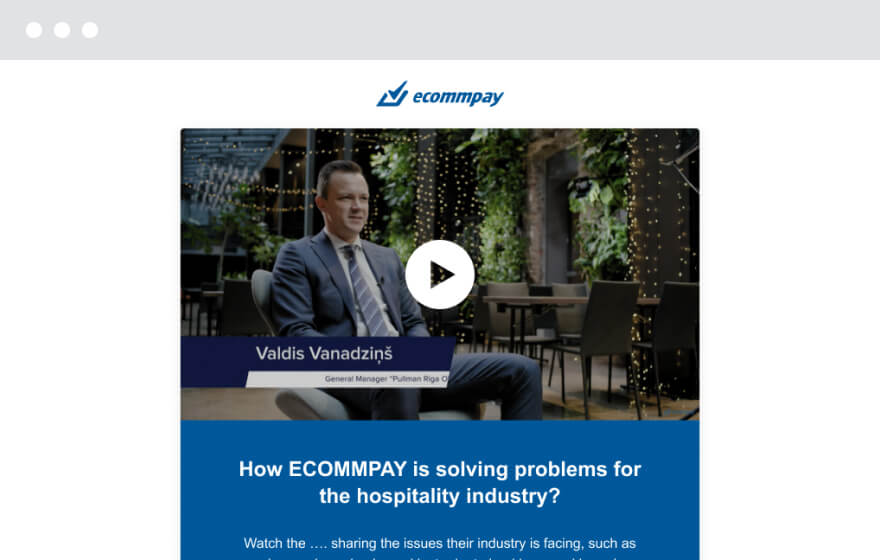Online shopping fraud statistics show that global losses from payment fraud reached $32.39 in 2020 – a number triple that of reports in 2011. And as time goes by, fraudsters and people with malicious intent try to take advantage of unknowing people online. Fraud only takes up a minuscule fraction of the overall cut of the market. But as the fraud incidence is on the rise, abandoning online payment isn’t the solution. Protection from fraud is.
When choosing an online payment method for your business, it’s essential to know the types of payment frauds and how you can prevent them. Here are six of the most common trends and best practices to outsmart fraudsters who use these techniques.
1. Identity Theft
As the global transaction value of digital payments reached $5.2 trillion in 2020, one of the most common strategies that fraudsters deploy is identity theft. The scheme is as old as commerce itself and has been a practice way before the Internet came to life. But the way scammers perform these crimes has changed.
Nowadays, identity thieves will try to steal consumers’ information by impersonating a website, online shop, or any other virtual authority and ask people for personal data. Phishers have been known to capture names, emails, contact numbers, and even payment information.
How to Avoid It
E-commerce companies can help their customers by constantly reminding them of official channels, websites, and payment platforms. Make them aware of any fake websites that might try to take their information. Consumers should also check websites before passing on any sensitive information like bank details, credit cards, and online wallets. Double-check a website for a trust seal or any suspicious URLs that might not have the same name as the original site.
2. Business email compromise
When scammers perform a business email compromise, they lure a company’s staff to initiate a transfer to the fraudulent person’s account by impersonating a higher-up with a fake business email. This form of fraud has cost companies over $1.5 billion a year.
Another similar malicious practice is invoice redirection. Fraudsters use social engineering to alter payment information on legitimate payable accounts, often impersonating a supplier asking for invoice fulfillment and providing the scammer’s bank details instead of the original suppliers. One specific instance might be if a scammer impersonates a supplier of raw materials and emails a billing statement with the fraudster’s bank details and asking for the bill’s immediate settlement.
How to Avoid It
Companies have curbed this growing trend by providing more frontline training, re-architecture of controls, and keeping strict databases of company transactions by using one centralized finance and payment app. Companies also keep flagging protocols to automatically block any incoming emails or messages from fraudulent accounts and applying new data and technologies like voice analytics.

3. Payment Interception
Payment interception, or also known as “man in the middle fraud,” is when malicious people take over a payment process. Fraud is moving away from credit cards and into e-wallets and social media-based transactions. With payments now possible via Telegram messenger, fraudsters are taking over transactions by intercepting transactions in the middle of the sales process.
Some impersonate a company representative and direct hot leads to another fake website. For instance, a fraudster might skim through an online shop’s website’s comment sections and respond to inquiring customers with a link going to an unauthorized payment page.
How to Avoid It
Payment interception can be very tricky to spot. Fraud detection in online payments of this category involves carefully studying a payment page before making any payments. Avoid using any payment option that doesn’t allow for disputes or refunds. A legitimate payment gateway will often allow money-backs as a way to ensure consumers that they’re on legitimate sites.
4. Password or Code Hacking
Password and code hacking has become more sophisticated over the years. There are dozens of strategies that scammers and phishers deploy to catch their personal information and credentials. This threat poses a risk to any website that uses an online platform to distribute, handle, or accept the currency.
With 69% of Gen Z-ers using mobile banking apps daily or weekly, fraudsters like to attack unknowing and young users. But that doesn’t mean that everyone else is safe. There is a need for anyone to be wary of password or code hacking to avoid account takeover.
How to Avoid It
One of the best e-commerce fraud prevention practices to avoid password or code hacking is always to use a secure password, meaning it contains a long string of characters, numbers, and symbols. Mix up your passwords and use a secure password storing app like Lastpass. It’s also important that e-commerce websites do their part by using a payment partner that adheres to the strictest levels of data security.

5. Refund Frauds
Integrating with Apple Pay, Google Pay, PayPal, or any other partner that allows refunds is a great way to avoid certain scams. But fraudsters have also used refund options as a form of online payment fraud. In these cases, they will place an order then prompt for a refund once fulfilled.
Merchandises lose an estimate of $27 billion a year according to the latest report from Globe Newswire. This number is up to 35% higher than in 2019.
How to Avoid It
The way to avoid refund frauds is to be upfront about your return policies and publish them on your website. Many companies don’t have a published return policy to begin with, which puts their customer service staff in a tight spot and pressures them to make unauthorized returns or refunds.
Always demand a receipt and proof of return of the product before issuing any refunds. You can also consider placing restocking fees for high-value products or those that can be difficult to ship.
6. Website Takeovers
Some malicious fraudsters will try to completely take over an e-commerce store by hacking them through a plugin or app inside the store. Some hackers are known to take over WooCommerce accounts and Shopify stores using a fake or outdated plugin, which they use to access company credentials and information.
In these cases, fraudsters might change payment credentials, bank details, credit card information to redirect all online payments to a fraudulent account instead of the e-commerce store’s official accounts.
How to Avoid It
If you’re a store owner, try using an up-to-date security plugin like WordFence to protect your account from takeovers. Perform regular audits of your apps and plugins and regularly change access information to avoid hacking or store takeovers.
Digital Payment is the Future
Despite all the accounts of fraud, phishing, and hacking, it’s hard to deny that digital payment is the future of commerce. Fraudsters will always be present whether in online or offline transactions, so abandoning virtual transactions isn’t the best solution. The overall solution is to be aware of today’s best and most popular payment gateways and sticking to the one that you’re familiar with.
Educate yourself on the future of online payments and start using solutions that provide data security, contingencies, and dispute opportunities.


_relatedNewsPreview.jpg)






